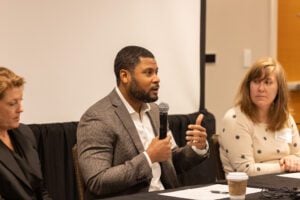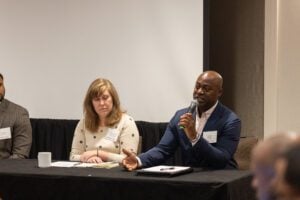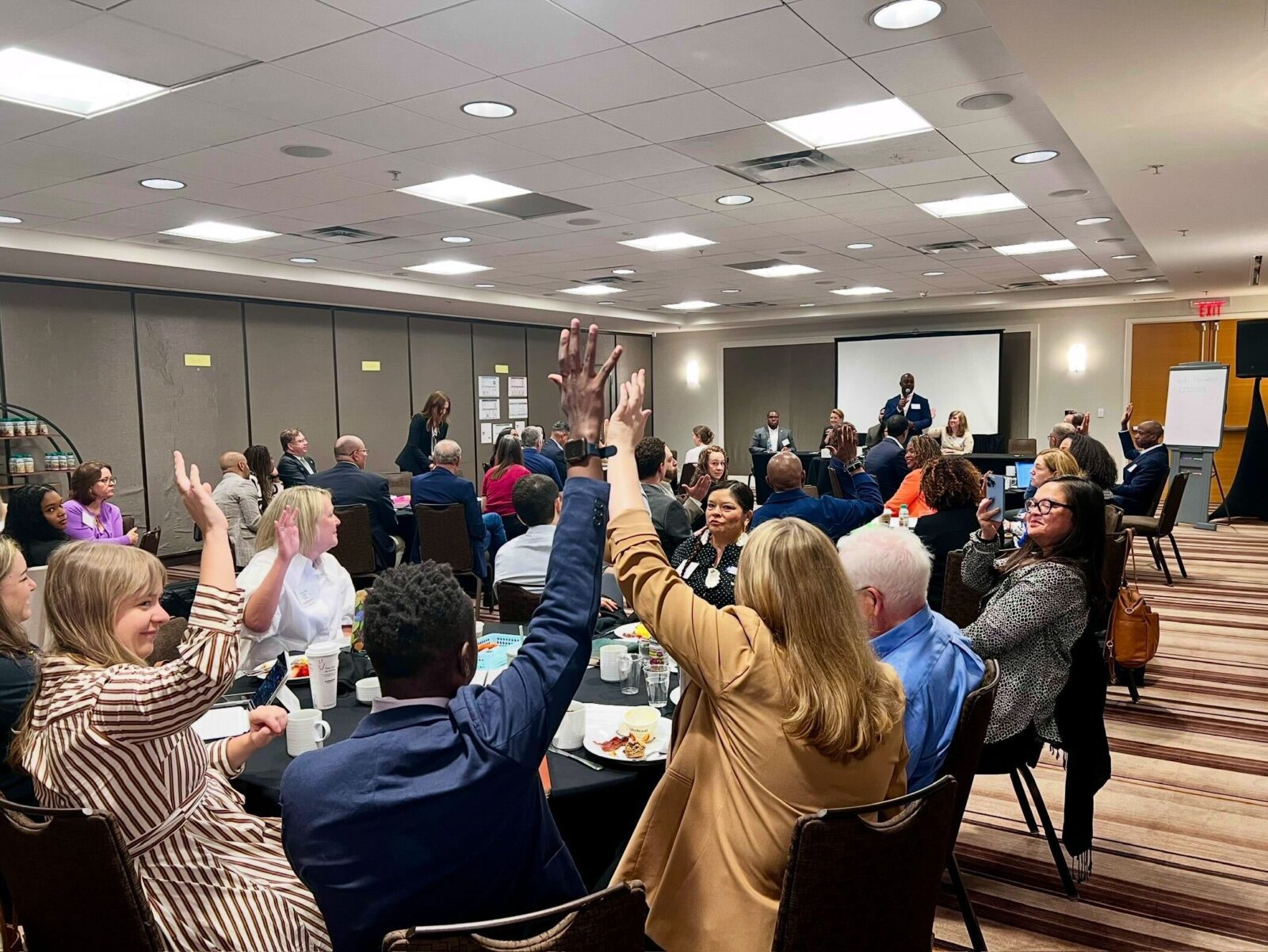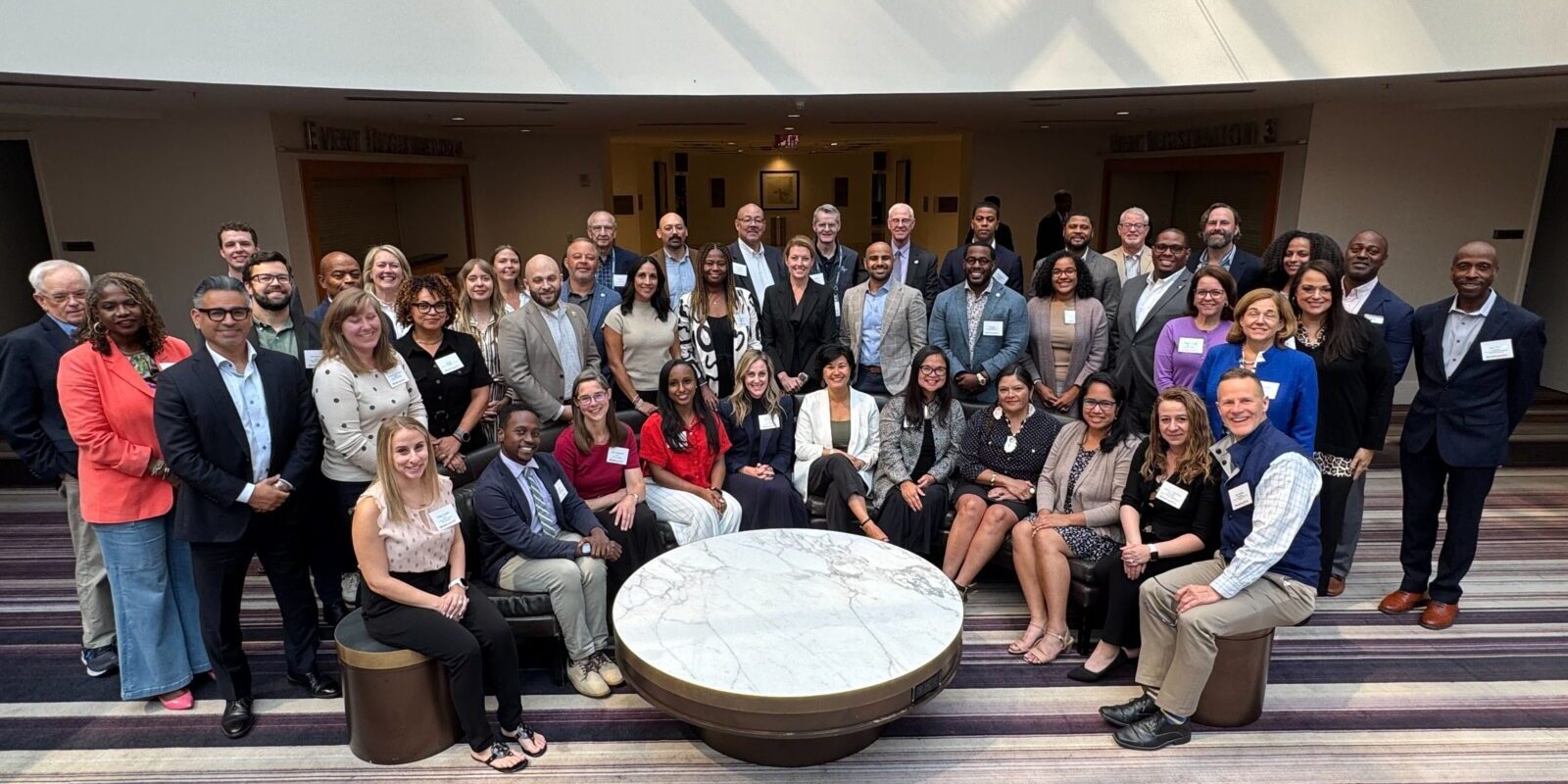Across the StriveTogether Cradle to Career Network, communities are proving that collaboration is a system for change. By aligning data, policy and people, they’re building civic infrastructure that turns shared accountability into measurable results for children and families.
As more states and communities recognize the power of place-based partnerships, the Cradle to Career Network is helping shape how collaboration translates into impact, from early literacy and family stability to postsecondary completion and economic mobility.
This fall, leaders from across the country came together to explore how collaboration fuels outcomes and how those outcomes can be sustained over time. Through conversations on the value of place-based work, partners shared what it takes to measure impact, strengthen civic infrastructure and create conditions for economic mobility from cradle to career. 
These insights came to life in a recent national conversation on The Value Proposition of the Place-Based Approach, moderated by Rob Watson, the inaugural executive director of EdRedesign and lecturer on education at Harvard Graduate School of Education. The discussion featured Josh Davis, vice president of policy and partnerships at StriveTogether; Christian Motley, vice president of partnerships and community impact at Results for America; Stacey Schweikhart, CEO of Learn to Earn Dayton, and Christina Drushell Williams, director of community initiatives for the Maryland Governor’s Office for Children. Together, they explored how local and state partnerships are aligning systems to deliver better outcomes from cradle to career.
Panelists reflected on how state and local partnerships are building civic infrastructure that supports economic mobility. The conversation brought together diverse perspectives, from government leaders shaping state policy to community practitioners driving local change, all united around a shared belief: collaboration is essential for results.
 Bridging Policy and Practice
Bridging Policy and Practice
Across the country, partnerships are showing what collaboration looks like in action. The power of place-based partnerships is clear in California, where the state’s $2.16 billion Children’s Savings Account initiative shows how civic infrastructure, built through local partnerships, can turn statewide goals into measurable results.
“When the California Treasurer’s Office reached out, they wanted to make sure every eligible child actually opted into an account,” recalled Josh Davis, vice president of policy and partnerships at StriveTogether. “But that required trust, and place-based partners already had that trust. They were one of many bridges between the system and the people.”
Through the California Cradle to Career Coalition, local partnerships in Fresno, Monterey and beyond helped parents activate thousands of accounts, increasing participation by more than 25%. “It’s about designing and implementing good policy,” Davis said. “And it’s about making sure it works for children and families, and that’s what place-based partners make possible.”
Panelists agreed that local implementation that informs state policy is the heart of the place-based approach. Christian Motley, vice president of partnerships and community impact at Results for America, explained, “Government and community collaboration is the future. We can’t move outcomes unless systems and people are working together. Communities bring innovation and evidence; government brings scale. We need both to achieve results.”
Motley noted that this relationship became especially clear during the pandemic. “When systems broke down, community partners stepped up,” he said. “That’s what civic infrastructure looks like in action. Like people and organizations who can respond, adapt and deliver when it matters most.”
Trust, Data and Alignment
Panelists from Ohio and Maryland shared how strong relationships and shared data are helping them turn statewide goals into local action. In Ohio, the state’s $170 million investment in early literacy has expanded the science of reading and high-impact tutoring to more than 150,000 students across 16 regions. Local partnerships like Learn to Earn Dayton have been key in connecting that work to classrooms and communities. “We can’t reach state goals without local insight,” said Stacey Schweikhart. “We’re designing and testing new ways to close reading gaps across districts. In some of our regions, those gaps have already narrowed by up to 10%.”
Schweikhart also described how Dayton’s partnership with the state has helped align early literacy, workforce and higher education systems. Through a local initiative called PACE, Pathways for Accelerated College and Career Experiences, students are earning more college credits while still in high school, shortening their path to completion. “We designed this work hand in hand with our state colleagues,” Schweikhart said. “It’s proof that partnership and alignment lead to impact faster.”

In Maryland, Williams and her team at the Governor’s Office for Children are aligning more than $200 million in federal and state investments across agencies through a new Children’s Cabinet strategy. The goal: to cut child poverty in half within a generation. Local management boards now track county-level data on child well-being, from kindergarten readiness to family stability, to help guide state decisions. “Policy decisions created these conditions,” Williams said. “Now we’re making intentional policy decisions to change them. But we can’t do it alone. Community partnerships are our ambassadors, our translators and our co-creators in this work.”
That commitment to co-creation has built new trust between state and local partners. “It’s about investing in relationships,” Willams added. “It’s about showing up, listening and walking alongside communities. That’s how you build trust that lasts beyond any one administration.”
 Staying in the Work
Staying in the Work
As the panel drew to a close, Davis reflected on the power of persistence. “We’re trying to move 4 million more children onto a path to mobility,” he said. “That won’t happen if we work in isolation. It happens when local partnerships and states practice collaboration every day, through reliability and trust.”
That spirit of collective improvement carried through the rest of the convening. When the group met again in October, participants reflected on progress since their first gathering. States like Maryland, Minnesota and Ohio had deepened cross-agency collaboration. Communities were testing new feedback loops to inform implementation. Partners were sharing fiscal maps and data dashboards to align resources. Most importantly, relationships had grown stronger.
Panelists left participants with four reminders for how to keep the work moving:
-
- Lead with shared outcomes.
- Use common data to connect local progress to state priorities and make alignment visible. Shared measures are the foundation for trust.
- Co-design solutions. Build programs and policies with communities, not for them.
- Local leaders know what works and can test solutions that inform state implementation.
The Policy Implementation Community of Practice continues to show what’s possible when policy and practice move in step. Panelists emphasized that place-based partnerships bring unique value to state policymakers by turning statewide goals into measurable progress for children and families. Data and evidence help connect government priorities to what’s working on the ground, while trust and relationships make that alignment sustainable.
From Dayton to Maryland, leaders are demonstrating how collaboration across systems and sectors can transform implementation into impact. As the conversation closed, participants were reminded that policy and implementation in place will change results for every child.






